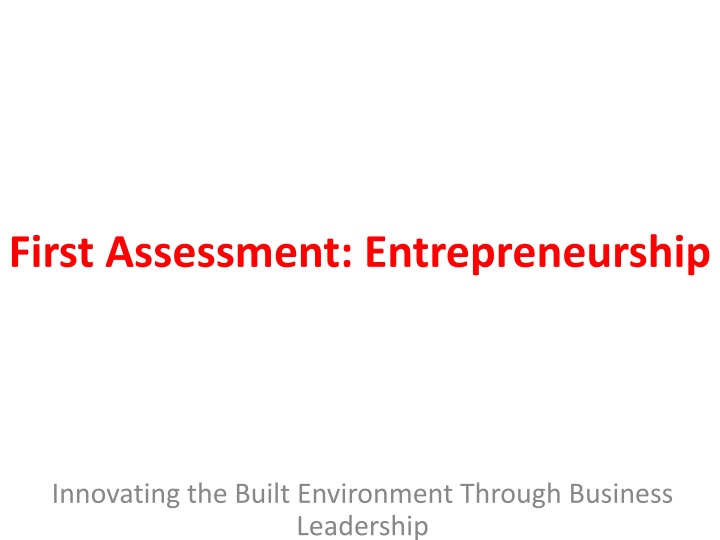
Exploring Key Aspects of Architecture Philosophy: A Comprehensive Study
Delve into the philosophy of architecture, examining aesthetic considerations, ontology, ethics, cultural impact, and spatial philosophy. Discover how architecture intertwines beauty, ethics, sustainability, inclusivity, cultural representation, and human experience of space.
Download Presentation

Please find below an Image/Link to download the presentation.
The content on the website is provided AS IS for your information and personal use only. It may not be sold, licensed, or shared on other websites without obtaining consent from the author. If you encounter any issues during the download, it is possible that the publisher has removed the file from their server.
You are allowed to download the files provided on this website for personal or commercial use, subject to the condition that they are used lawfully. All files are the property of their respective owners.
The content on the website is provided AS IS for your information and personal use only. It may not be sold, licensed, or shared on other websites without obtaining consent from the author.
E N D
Presentation Transcript
First Assessment: Entrepreneurship Innovating the Built Environment Through Business Leadership
Philosophy of Architecture The philosophy of architecture is a field that explores fundamental questions about the nature, meaning, purpose, and value of architecture. It delves into the principles that guide the design, construction, and interpretation of built environments, addressing both theoretical and practical aspects.
The key aspects of the philosophy of Architecture 1- Aesthetic Considerations What is beauty in architecture? Examines how aesthetics influences design, from proportions and symmetry to materials and textures. The role of form and function: Balancing the utilitarian purpose of architecture with its visual and emotional impact.
The key aspects of the philosophy of Architecture 2. Ontology of Architecture What constitutes architecture? It goes beyond structures to include spaces, environments, and human interactions. Architecture as Art and Science: Understanding architecture as a blend of creative expression and technical discipline. Relationship with Nature: The integration of built forms with natural landscapes.
The key aspects of the philosophy of Architecture 3. Ethics and Values Architectural Responsibility: The ethical obligations of architects to society, the environment, and future generations. Sustainability: Designing eco-friendly buildings that minimize environmental impact and promote longevity. Inclusivity and Accessibility: Ensuring architecture accommodates diverse needs and promotes equity.
The key aspects of the philosophy of Architecture 4. Cultural and Social Dimensions Cultural Representation: How architecture reflects cultural identity, traditions, and values. Impact on Society: The role of architecture in shaping social behavior, interaction, and well-being. Symbolism and Meaning: The significance of architectural forms as cultural and historical symbols.
The key aspects of the philosophy of Architecture 5. Spatial Philosophy The Nature of Space: Examines the distinctions between public and private, sacred and secular, and functional and symbolic spaces. Human Experience of Space: How individuals perceive, inhabit, and interact with spaces emotionally and sensorially. Boundaries and Transitions: Exploring thresholds, connections, and divisions within architectural designs.
The key aspects of the philosophy of Architecture 6. Temporal Perspectives Architecture and Time: How architecture adapts to historical, cultural, and technological changes. Preservation and Innovation: Balancing the conservation of historical buildings with the need for modern advancements.
The key aspects of the philosophy of Architecture 7. Technological Dimensions Role of Technology: The impact of digital tools, AI, and advanced materials on architectural creativity and practice. Automation vs. Craftsmanship: Debating whether technology enhances or diminishes the human aspect of design. Smart and Adaptive Architecture: Integration of IT and responsive systems in contemporary buildings.
The key aspects of the philosophy of Architecture 8. Sustainability in Architecture Green Building Practices: Using materials and methods that prioritize environmental health. Circular Economy: Promoting reuse, recycling, and resource efficiency in construction. Resilient Design: Adapting architecture to withstand climate change and natural disasters.
The key aspects of the philosophy of Architecture 8. Sustainability in Architecture Green Building Practices: Using materials and methods that prioritize environmental health. Circular Economy: Promoting reuse, recycling, and resource efficiency in construction. Resilient Design: Adapting architecture to withstand climate change and natural disasters.
Philosophers of Architecture Vitruvius: Emphasized the principles of firmness, commodity, and delight. Immanuel Kant: Addressed beauty and the sublime in architecture. Martin Heidegger: Explored dwelling and the existential role of architecture. Gilles Deleuze: Discussed fluidity and multiplicity in architectural forms. Peter Eisenman: Linked philosophy with deconstructivism in architecture. The philosophy of architecture bridges the gap between theory and practice, encouraging architects, designers, and thinkers to question and refine their approach to creating spaces that are meaningful, functional, and reflective of human values.
Assessment 1 What is Architectural Entrepreneurship? - Definition: Combining architectural expertise with entrepreneurial skills to innovate and drive impact. - Importance: Expanding the scope of architectural practice beyond design into business, innovation, and leadership. Why It Matters: - Enables architects to create opportunities, address challenges, and lead transformative projects. - Promotes sustainable and innovative approaches in the built environment.
Characteristics of an Architectural Entrepreneur 1. Visionary Thinking: Identifying trends and future opportunities. 2. Innovation: Embracing new technologies and methodologies. 3. Leadership: Managing multidisciplinary teams and projects. 4. Adaptability: Navigating market demands and economic shifts. 5. Strategic Thinking: Aligning design goals with business objectives.
Opportunities in Architectural Entrepreneurship - Sustainable Development: Eco-friendly and energy-efficient projects. - Digital Tools: BIM, parametric design, and AI- driven solutions. - Community Projects: Addressing affordable housing and urban renewal. - Smart Cities: Integration of IoT and responsive design. - Global Collaborations: Expanding networks and working internationally.
Examples of Successful Architectural Entrepreneurs 1. Bjarke Ingels (BIG): Visionary designs and innovative business strategies. 2. Zaha Hadid Architects: Pioneering parametric design and iconic projects. 3. Norman Foster: Combining sustainability with large-scale urban development. 4. MAD Architects: Merging cultural narratives with futuristic forms.
Steps to Become an Architectural Entrepreneur 1. Develop Business Acumen: Understand finance, marketing, and project management. 2. Leverage Technology: Use cutting-edge tools to innovate designs. 3. Build a Network: Collaborate with professionals across industries. 4. Focus on Problem-Solving: Address real-world challenges creatively. 5. Continuous Learning: Stay updated with trends and advancements.
Challenges in Architectural Entrepreneurship - Balancing Design and Business: Maintaining creative integrity while meeting business goals. - Financial Risks: Managing project budgets and investments. - Market Competition: Standing out in a competitive industry. - Regulatory Constraints: Navigating building codes and legal requirements. Overcoming Challenges: - Develop a strong business plan. - Seek mentorship and partnerships. - Embrace innovation and adaptability.
Future of Architectural Entrepreneurship - Integration of AI and Automation: Transforming design and construction processes. - Circular Economy: Designing with sustainability and material reuse in mind. - Remote Collaboration: Leveraging virtual tools for global teamwork. - Health and Wellness: Focusing on human- centric design for well-being.




















